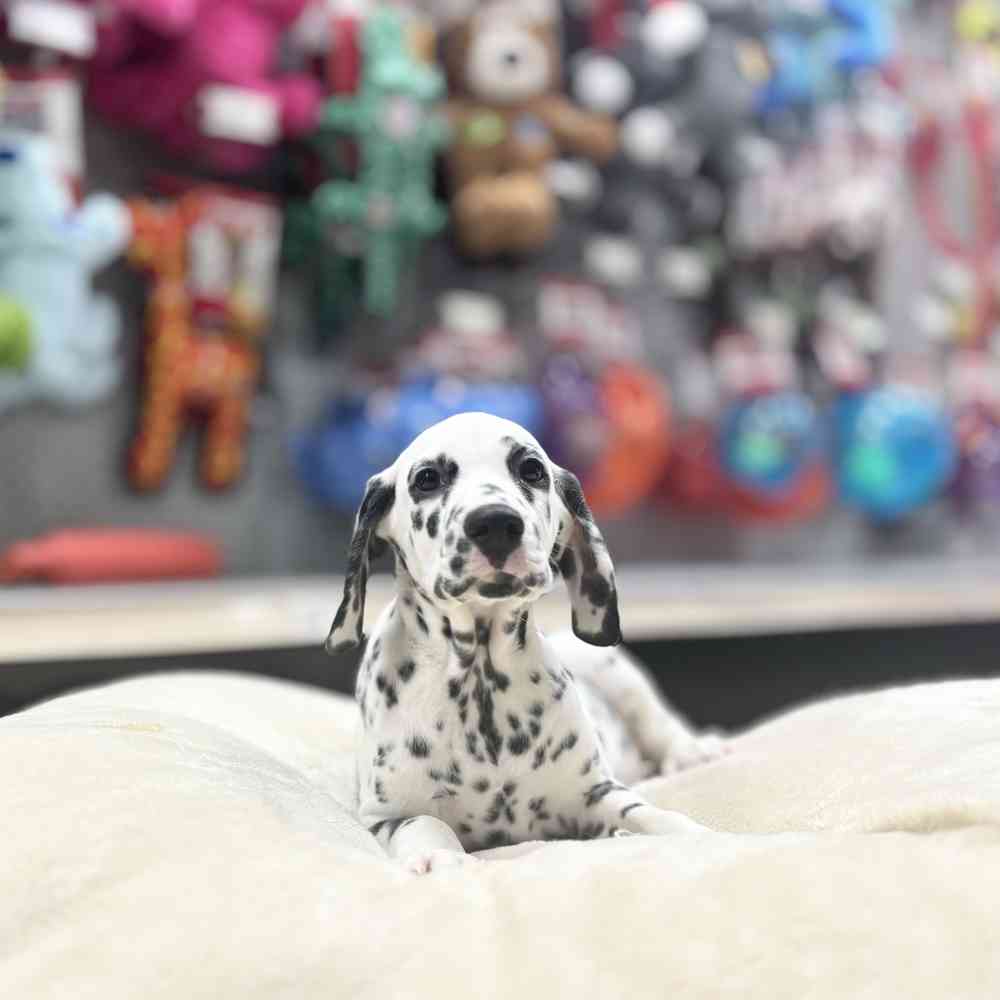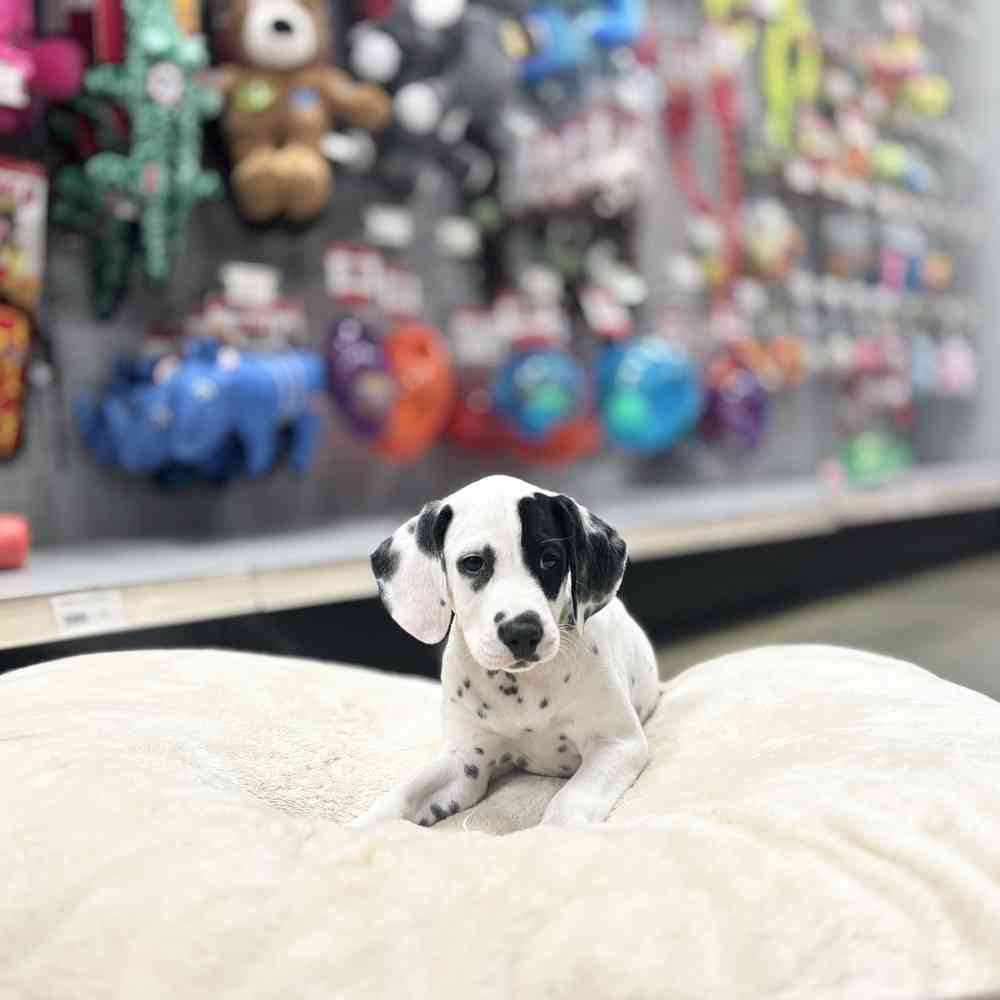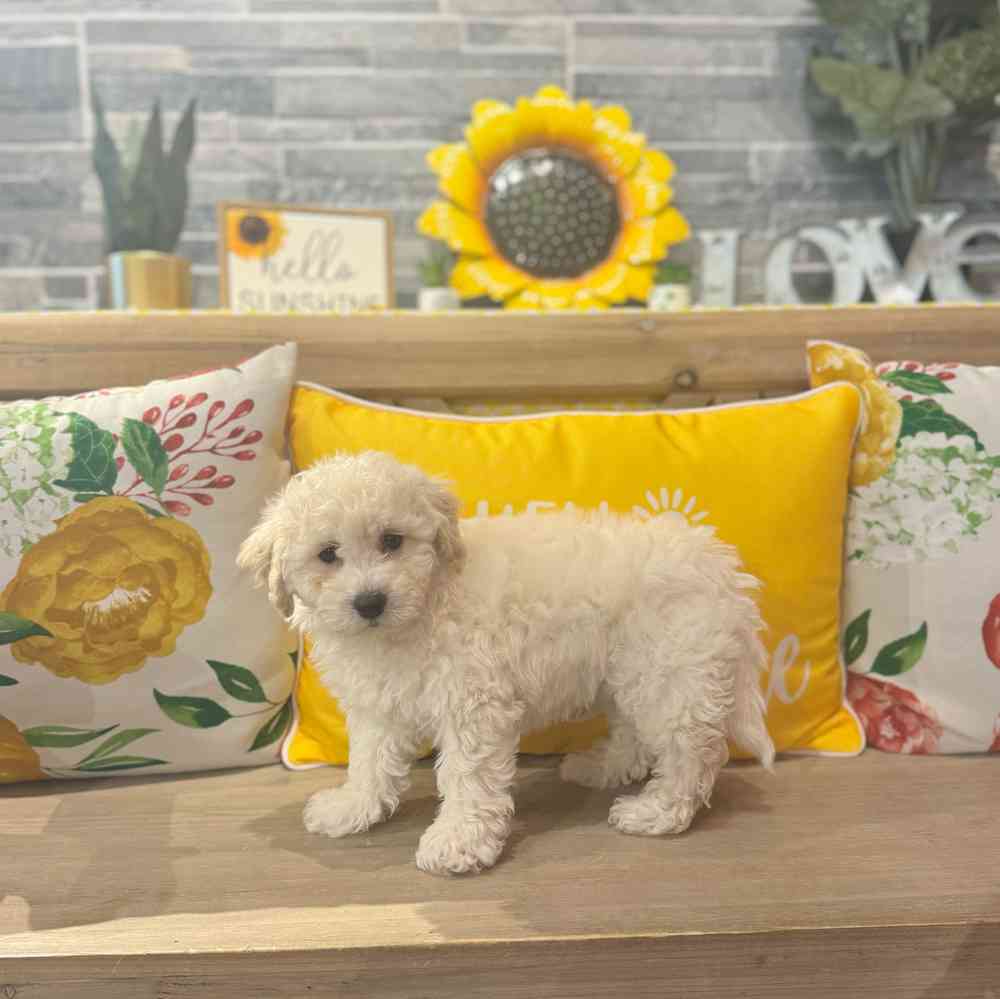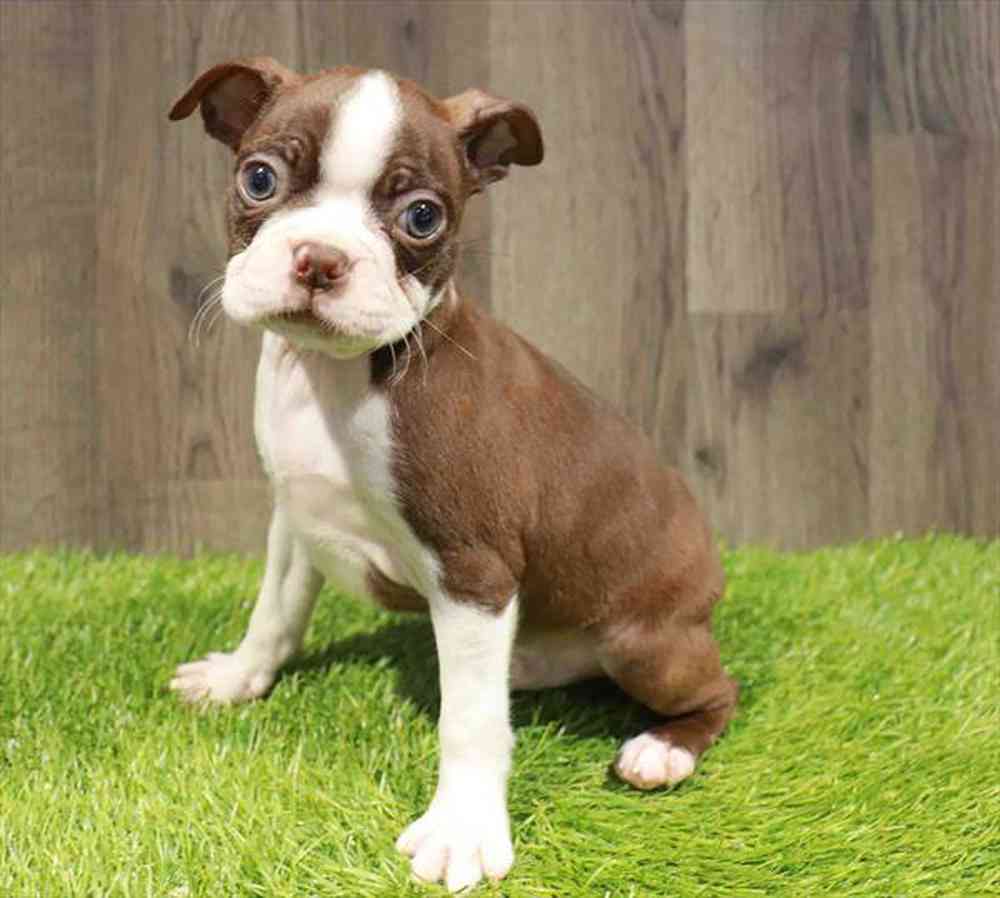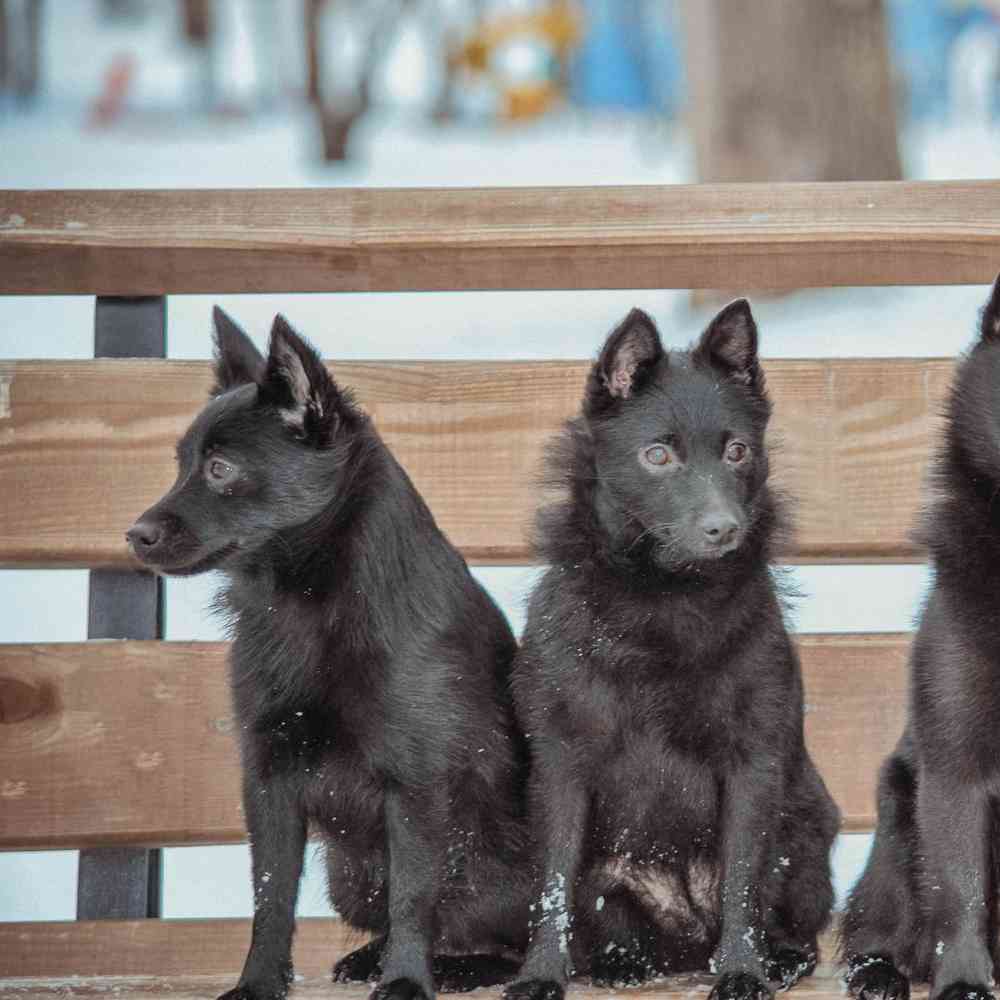
AKC Registrable
Schipperke
The Schipperke, Belgium's "little captain," is the traditional barge dog of the Low Countries. Curious, lively, and intense but mischievous, this little black dog is a robust, long-lived companion for whom there is never a dull moment.
Available Pups
Puppy Knowledge
Breed Standard
General Appearance
The Schipperke is an agile, active watchdog and hunter of vermin. In appearance he is a small, thickset, cobby, black, tailless dog, with a fox-like face. The dog is square in profile and possesses a distinctive coat, which includes a stand-out ruff, cape and culottes. All of these create a unique silhouette, appearing to slope from shoulders to croup. Males are decidedly masculine without coarseness. Bitches are decidedly feminine without overrefinement. Any deviation from the ideal described in the standard should be penalized to the extent of the deviation. Faults common to all breeds are as undesirable in the Schipperke as in any other breed, even though such faults may not be specifically mentioned in the standard.
Size, Proportion, Substance
Size - The suggested height at the highest point of the withers is 11 to 13 inches for males and 10 to 12 inches for bitches. Quality should always take precedence over size. Proportion - Square in profile. Substance - Thickset.
Head
Expression - The expression is questioning, mischievous, impudent and alert, but never mean or wild. The well proportioned head, accompanied by the correct eyes and ears, will give the dog proper Schipperke expression. Skull - The skull is of medium width, narrowing toward the muzzle. Seen in profile with the ears laid back, the skull is slightly rounded. The upper jaw is moderately filled in under the eyes, so that, when viewed from above, the head forms a wedge tapering smoothly from the back of the skull to the tip of the nose. The stop is definite but not prominent. The length of the muzzle is slightly less than the length of the skull. Eyes The ideal eyes are small, oval rather than round, dark brown, and placed forward on the head. Ears - The ears are small, triangular, placed high on the head, and, when at attention, very erect. A drop ear or ears is a disqualification. Nose - The nose is small and black. Bite - The bite must be scissors or level. Any deviation is to be severely penalized.
Neck, Topline, Body
Neck - The neck is of moderate length, slightly arched and in balance with the rest of the dog to give the correct silhouette. Topline - The topline is level or sloping slightly from the withers to the croup. The stand-out ruff adds to the slope, making the dog seem slightly higher at the shoulders than at the rump. Body - The chest is broad and deep, and reaches to the elbows. The well sprung ribs (modified oval) are wide behind the shoulders and taper to the sternum. The forechest extends in front of the shoulders between the front legs. The loin is short, muscular and moderately drawn up. The croup is broad and well-rounded with the tail docked. No tail is visually discernible.
Forequarters
The shoulders are well laid back, with the legs extending straight down from the body when viewed from the front. From the side, legs are placed well under the body. Pasterns are short, thick and strong, but still flexible, showing a slight angle when viewed from the side. Dewclaws are generally removed. Feet are small, round and tight. Nails are short, strong and black.
Hindquarters
The hindquarters appear slightly lighter than the forequarters, but are well muscled, and in balance with the front. The hocks are well let down and the stifles are well bent. Extreme angulation is to be penalized. From the rear, the legs extend straight down from the hip through the hock to the feet. Dewclaws must be removed.
Coat
Pattern: The adult coat is highly characteristic and must include several distinct lengths growing naturally in a specific pattern. The coat is short on the face, ears, front of the forelegs and on the hocks; it is medium length on the body, and longer in the ruff, cape, jabot and culottes. The ruff begins in back of the ears and extends completely around the neck; the cape forms an additional distinct layer extending beyond the ruff; the jabot extends across the chest and down between the front legs. The hair down the middle of the back, starting just behind the cape and continuing over the rump, lies flat. It is slightly shorter than the cape but longer than the hair on the sides of the body and sides of the legs. The coat on the rear of the thighs forms culottes, which should be as long as the ruff. Lack of differentiation in coat lengths should be heavily penalized, as it is an essential breed characteristic. Texture - The coat is abundant, straight and slightly harsh to the touch. The softer undercoat is dense and short on the body and is very dense around the neck, making the ruff stand out. Silky coats, body coats over three inches in length or very short harsh coats are equally incorrect. Trimming - As the Schipperke is a natural breed, only trimming of the whiskers and the hair between the pads of the feet is optional. Any other trimming must not be done.
Color
The outercoat must be black. Any color other than a natural black is a disqualification. The undercoat, however, may be slightly lighter. During the shedding period, the coat might take on a transitory reddish cast, which is to be penalized to the degree that it detracts from the overall black appearance of the dog. Graying due to age (seven years or older) or occasional white hairs should not be penalized.
Gait
Proper Schipperke movement is a smooth, well coordinated and graceful trot (basically double tracking at a moderate speed), with a tendency to gradually converge toward the center of balance beneath the dog as speed increases. Front and rear must be in perfect balance with good reach in front and drive in the rear. The topline remains level or slightly sloping downward from the shoulders to the rump. Viewed from the front, the elbows remain close to the body. The legs form a straight line from the shoulders through the elbows to the toes, with the feet pointing straight ahead. From the rear, the legs form a straight line from the hip through the hocks to the pads, with the feet pointing straight ahead.
Temperament
Confident, Alert, Curious
Disqualifications
A drop ear or ears. Any color other than a natural black.
Overview
Group
Non-Sporting
About
Standing no higher than 13 inches, Schipperkes are small dogs built for hard work. Schips were created as ratters and watchdogs. Their powerful jaws, necks, and forequarters—coupled with a stealthy, catlike hunting style—make them ideal rat-catching machines. The black coat is profuse around the neck, shoulders, and legs, giving the breed a silhouette that accentuates a thick, substantial body. The foxy face completes the unique look of a unique breed. If you can’t tell a Schipperke from an ordinary dog, you simply haven’t been paying attention.
History
Late medieval Belgium was the birthplace of the Schipperke (correctly pronounced “SHEEP-er-ker,” though many American owners say “SKIP-er-kee”). The breed earned its fame as shipboard exterminators on the canals that crisscrossed the Low Countries. The little black avenger of the Belgian dockyards was also a fearless watchdog on barges and in city shops. It was among the sailors and shopkeepers of Brussels and Antwerp that these quick, agile dogs earned the nickname “schipperke,” Flemish for “little captain.”
Standard
The Schipperke is an agile, active watchdog and hunter of vermin. In appearance he is a small, thickset, cobby, black, tailless dog, with a fox-like face. The dog is square in profile and possesses a distinctive coat, which includes a stand-out ruff, cape and culottes. All of these create a unique silhouette, appearing to slope from shoulders to croup. Males are decidedly masculine without coarseness. Bitches are decidedly feminine without over-refinement. Any deviation from the ideal described in the standard should be penalized to the extent of the deviation. Faults common to all breeds are as undesirable in the Schipperke as in any other breed, even though such faults may not be specifically mentioned in the standard.
Nutrition
The Schipperke should be fed a high-quality dog food appropriate to the dog’s age (puppy, adult, or senior) and activity level. Learn about which human foods are safe for dogs, and which are not. Check with your vet or the dog’s breeder if you have any questions or concerns about your dog’s weight or diet. Clean, fresh water should always be available.
Grooming
The Schipperke’s coat needs only weekly brushing, though they do go through a shedding season once or twice a year. During these periods, more frequent brushing will help to keep the amount of shed hair under control. As with all breeds, the nails should be trimmed regularly, as overly long nails can cause the dog discomfort.
Exercise
Schipperkes are very active, energetic, and busy little dogs. A brisk daily walk or a romp in a fenced yard will provide needed exercise. They love playing and exploring, and they thrive in households that have the time and patience to properly train them and appreciate their playful personalities. Schips can also let off steam racing around the house or apartment.
Training
Due to their watchdog tendencies, Schipperkes can turn into barkers if not taught otherwise. Equally happy in an apartment or a home with a large yard, they should be kept on leash when not in a fenced area and should be taken to obedience classes. Schips absolutely need to be trained to come when called as early as possible, due to their instinctive urge to go exploring. They have an independent nature and can be a challenge to train. With persistent and patient owners, they can learn almost anything and can excel in sports such as obedience and agility. Some also do quite well at herding.
Health
Schipperkes are generally healthy dogs, and reputable breeders screen their breeding stock for health concerns such as luxating patellas (slipping kneecaps), Legg-Calve-Perthes disease (hip problems), eye problems, and thyroid problems. Breeders can also test for MPS IIIB, a newly recognized and fatal disease that usually shows up by 2-4 years of age as balance problems, and avoid producing the disease by identifying carriers and breeding them appropriately. Regular visits to the vet for checkups and parasite control help to ensure the dog has a long, healthy life.


